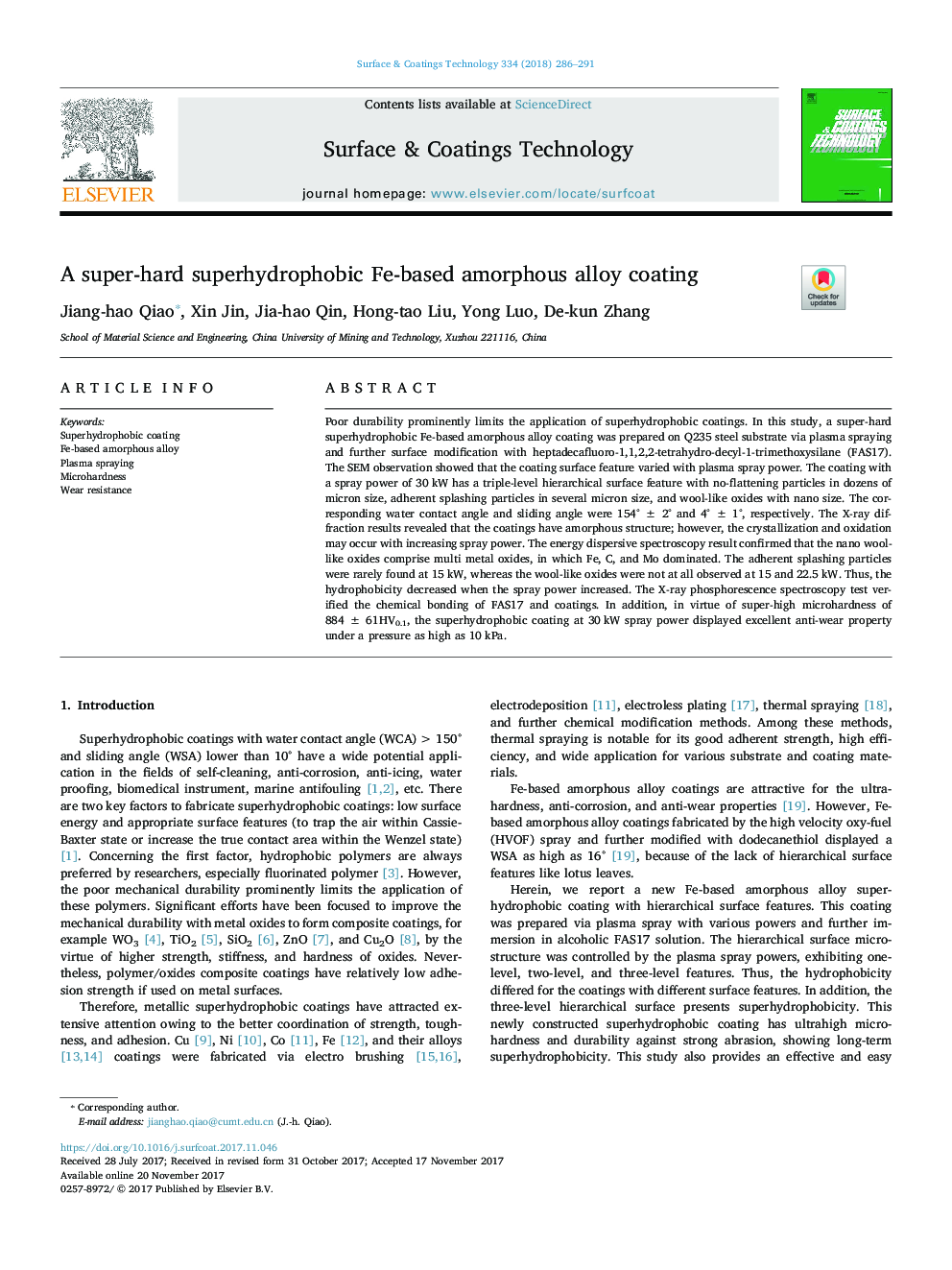| Article ID | Journal | Published Year | Pages | File Type |
|---|---|---|---|---|
| 8024575 | Surface and Coatings Technology | 2018 | 6 Pages |
Abstract
Poor durability prominently limits the application of superhydrophobic coatings. In this study, a super-hard superhydrophobic Fe-based amorphous alloy coating was prepared on Q235 steel substrate via plasma spraying and further surface modification with heptadecafluoro-1,1,2,2-tetrahydro-decyl-1-trimethoxysilane (FAS17). The SEM observation showed that the coating surface feature varied with plasma spray power. The coating with a spray power of 30 kW has a triple-level hierarchical surface feature with no-flattening particles in dozens of micron size, adherent splashing particles in several micron size, and wool-like oxides with nano size. The corresponding water contact angle and sliding angle were 154° ± 2° and 4° ± 1°, respectively. The X-ray diffraction results revealed that the coatings have amorphous structure; however, the crystallization and oxidation may occur with increasing spray power. The energy dispersive spectroscopy result confirmed that the nano wool-like oxides comprise multi metal oxides, in which Fe, C, and Mo dominated. The adherent splashing particles were rarely found at 15 kW, whereas the wool-like oxides were not at all observed at 15 and 22.5 kW. Thus, the hydrophobicity decreased when the spray power increased. The X-ray phosphorescence spectroscopy test verified the chemical bonding of FAS17 and coatings. In addition, in virtue of super-high microhardness of 884 ± 61HV0.1, the superhydrophobic coating at 30 kW spray power displayed excellent anti-wear property under a pressure as high as 10 kPa.
Keywords
Related Topics
Physical Sciences and Engineering
Materials Science
Nanotechnology
Authors
Jiang-hao Qiao, Xin Jin, Jia-hao Qin, Hong-tao Liu, Yong Luo, De-kun Zhang,
